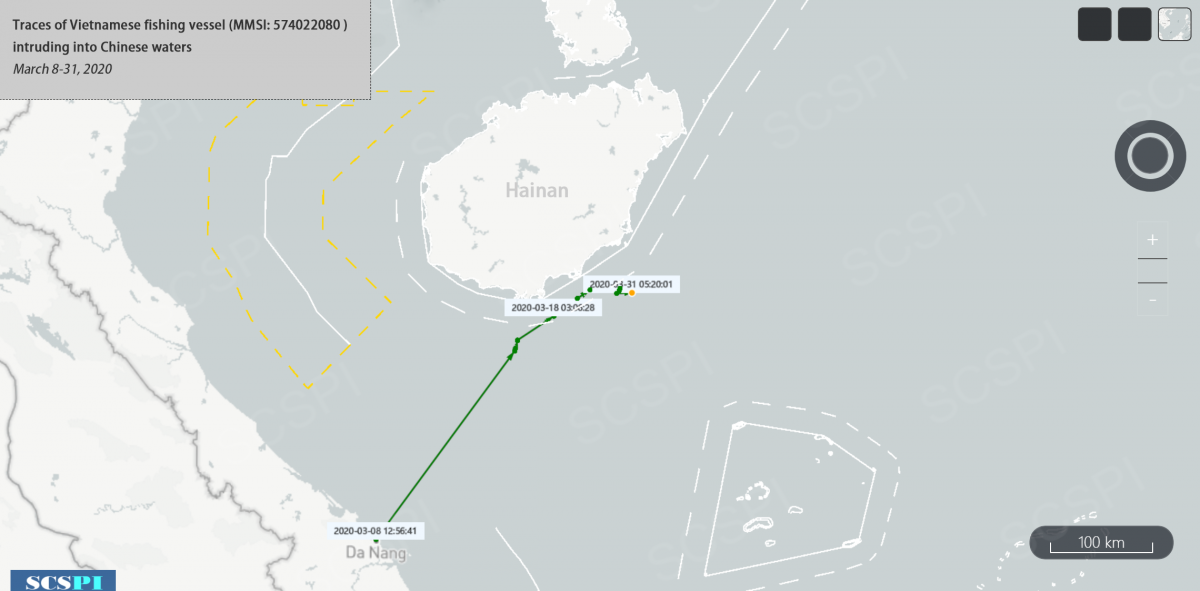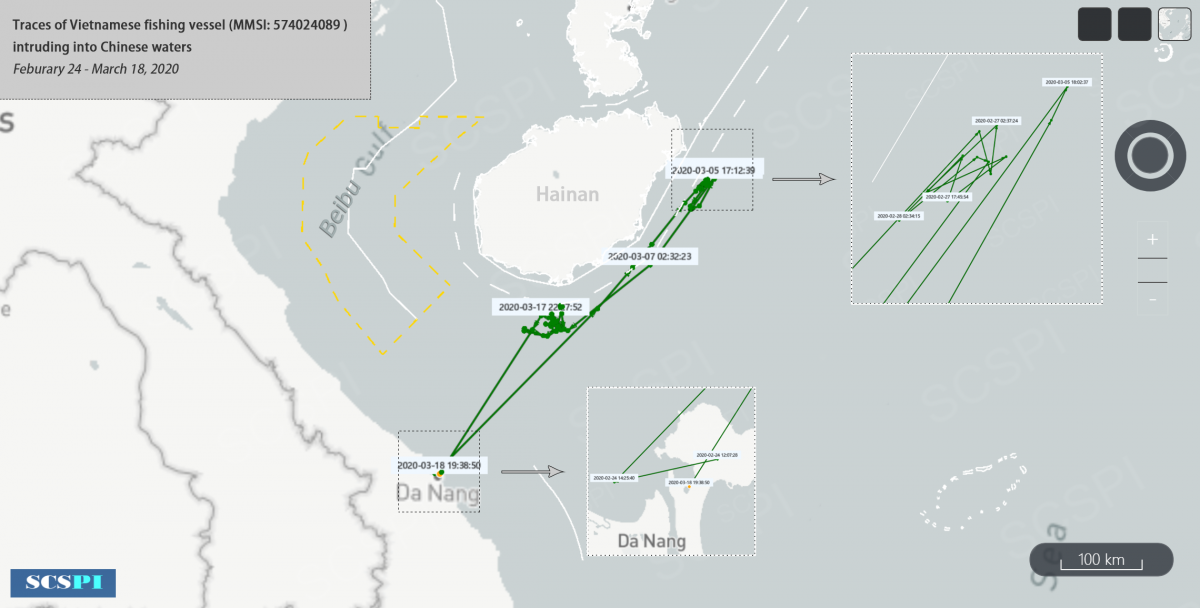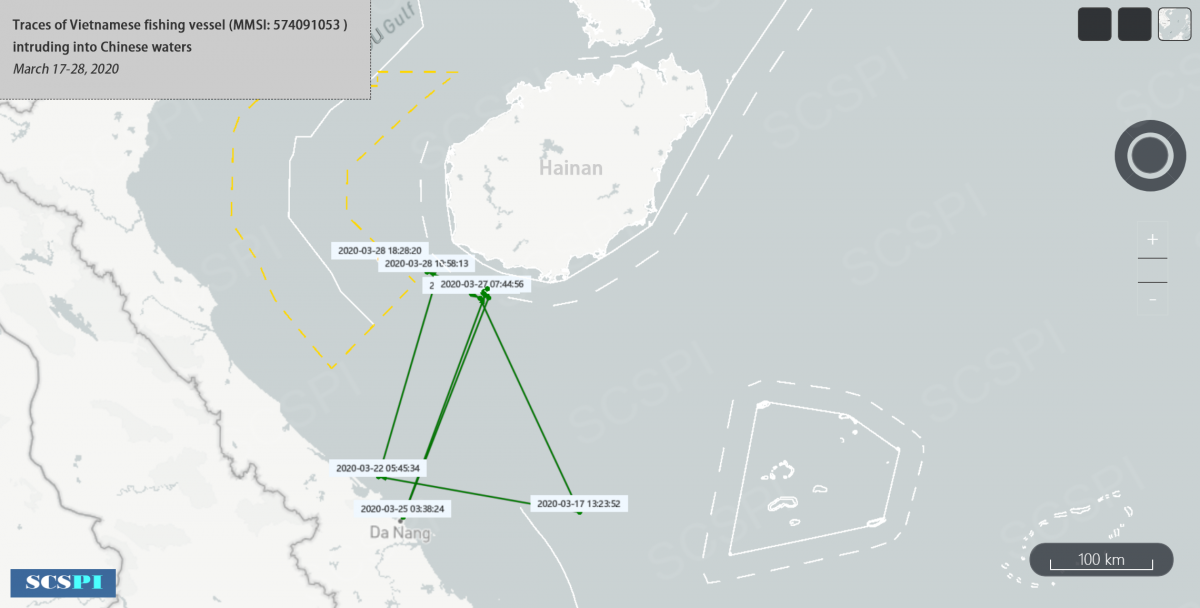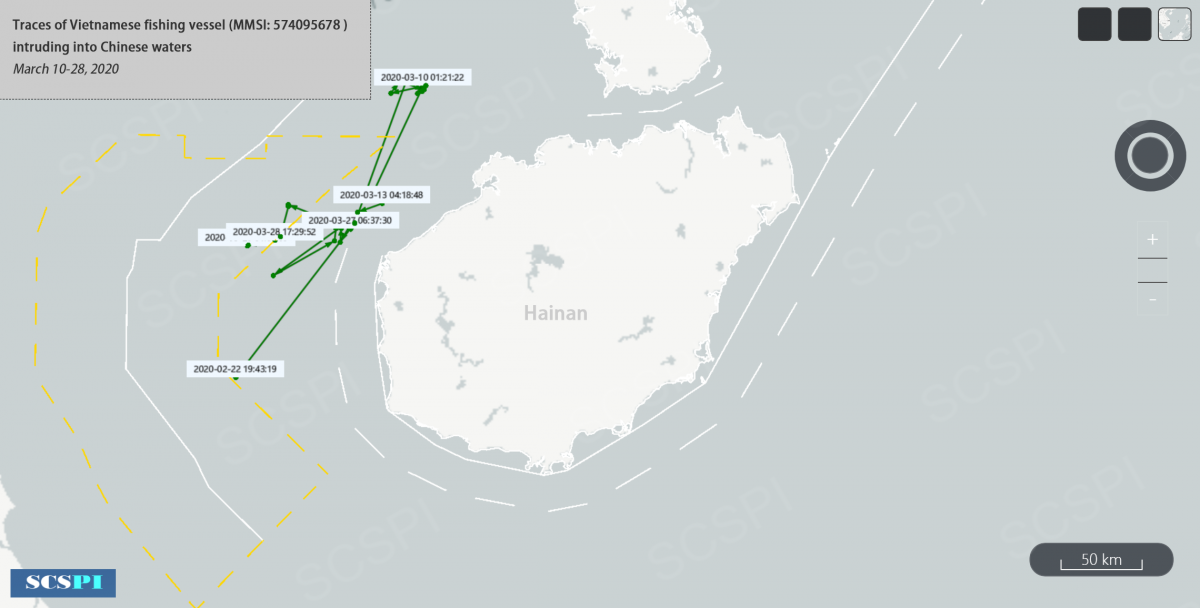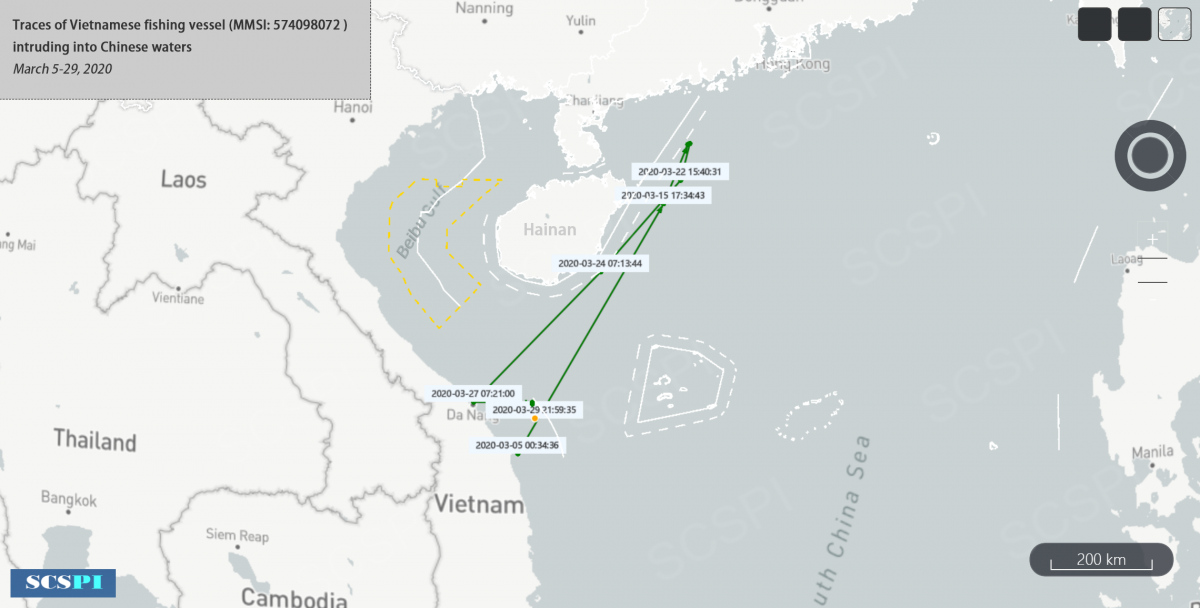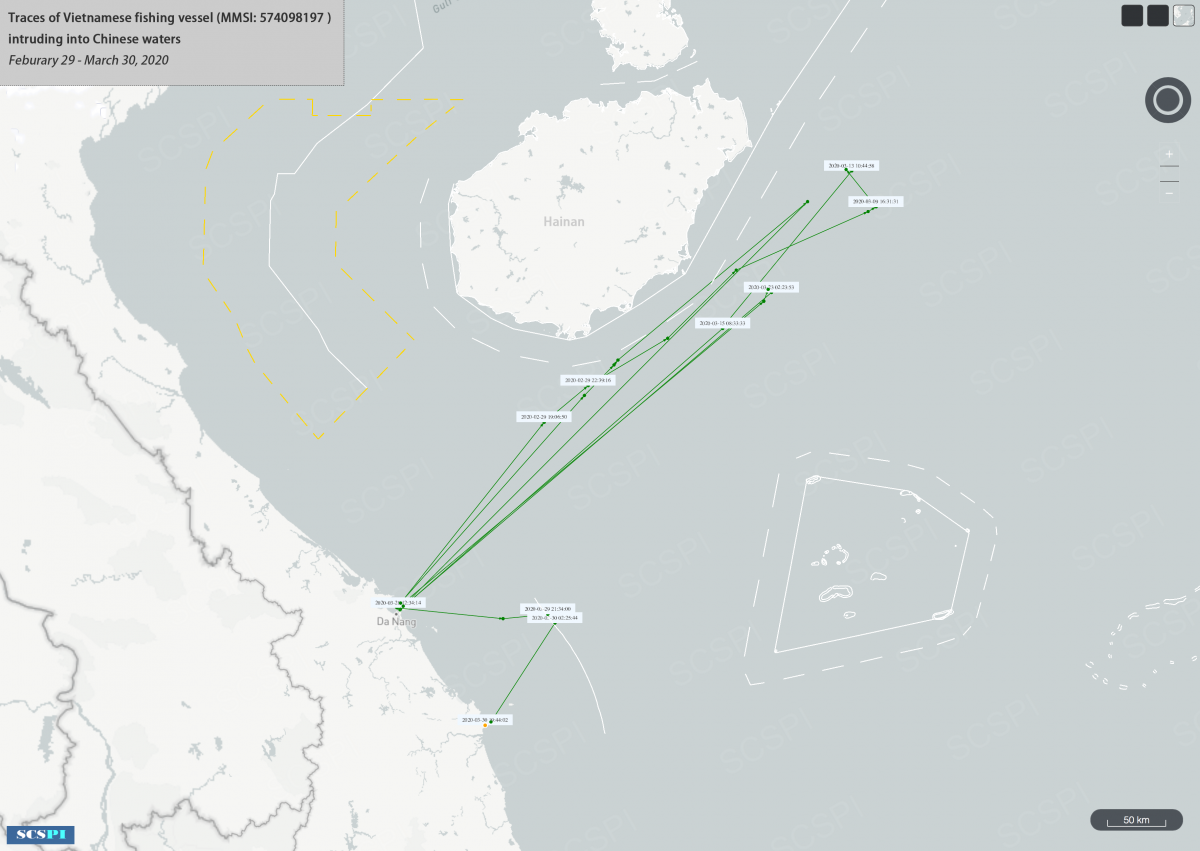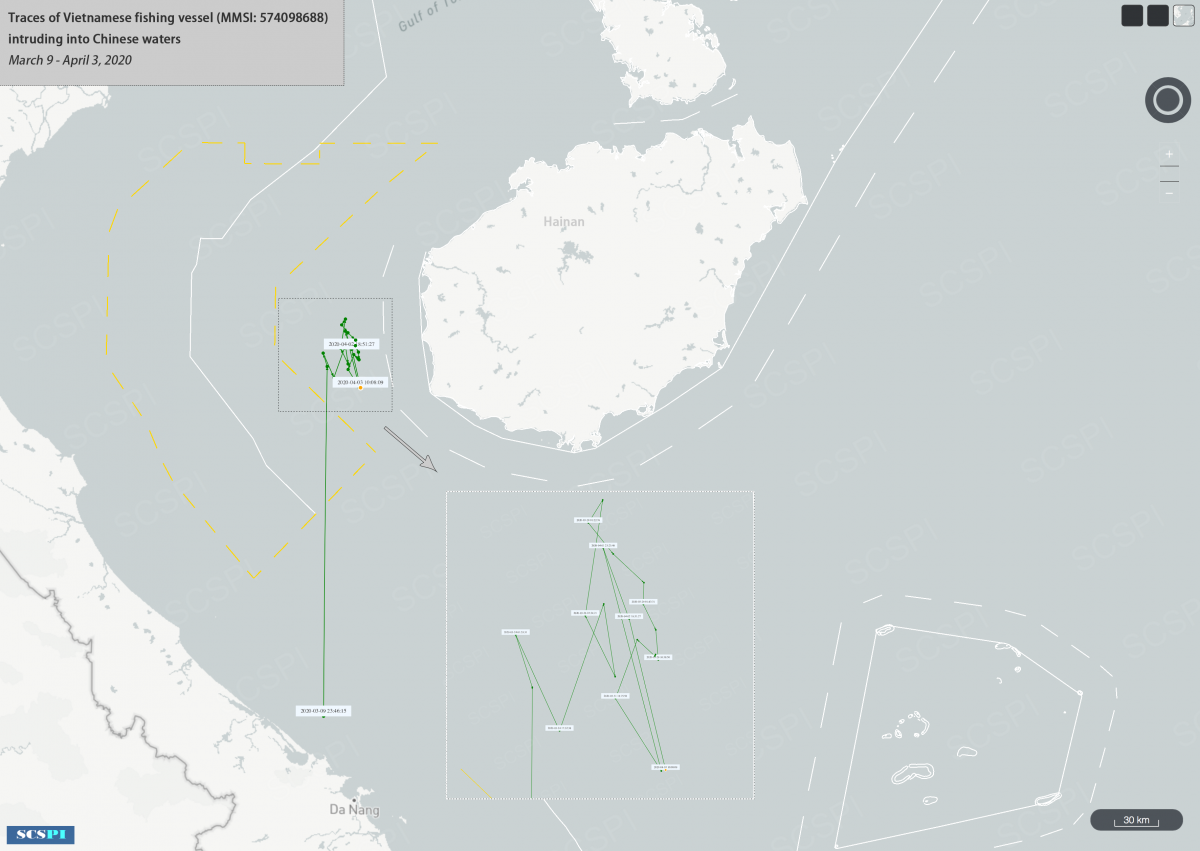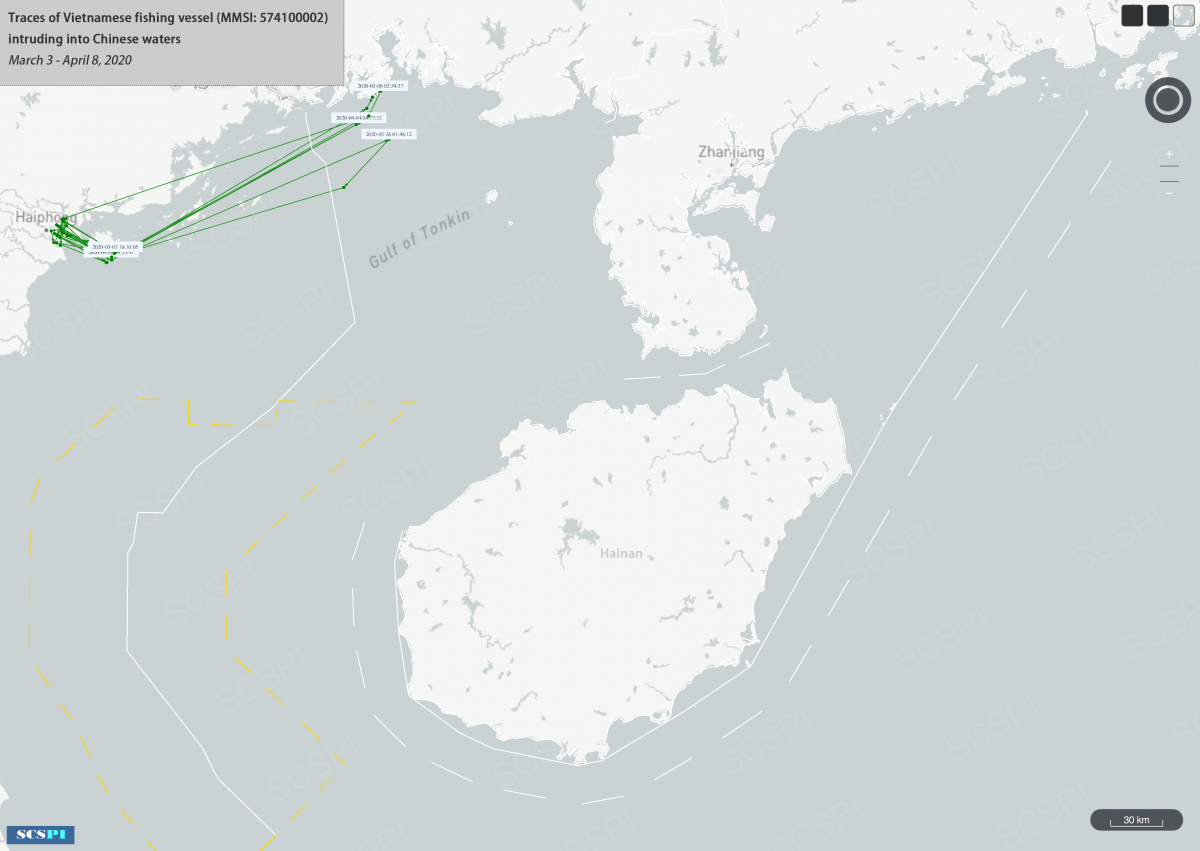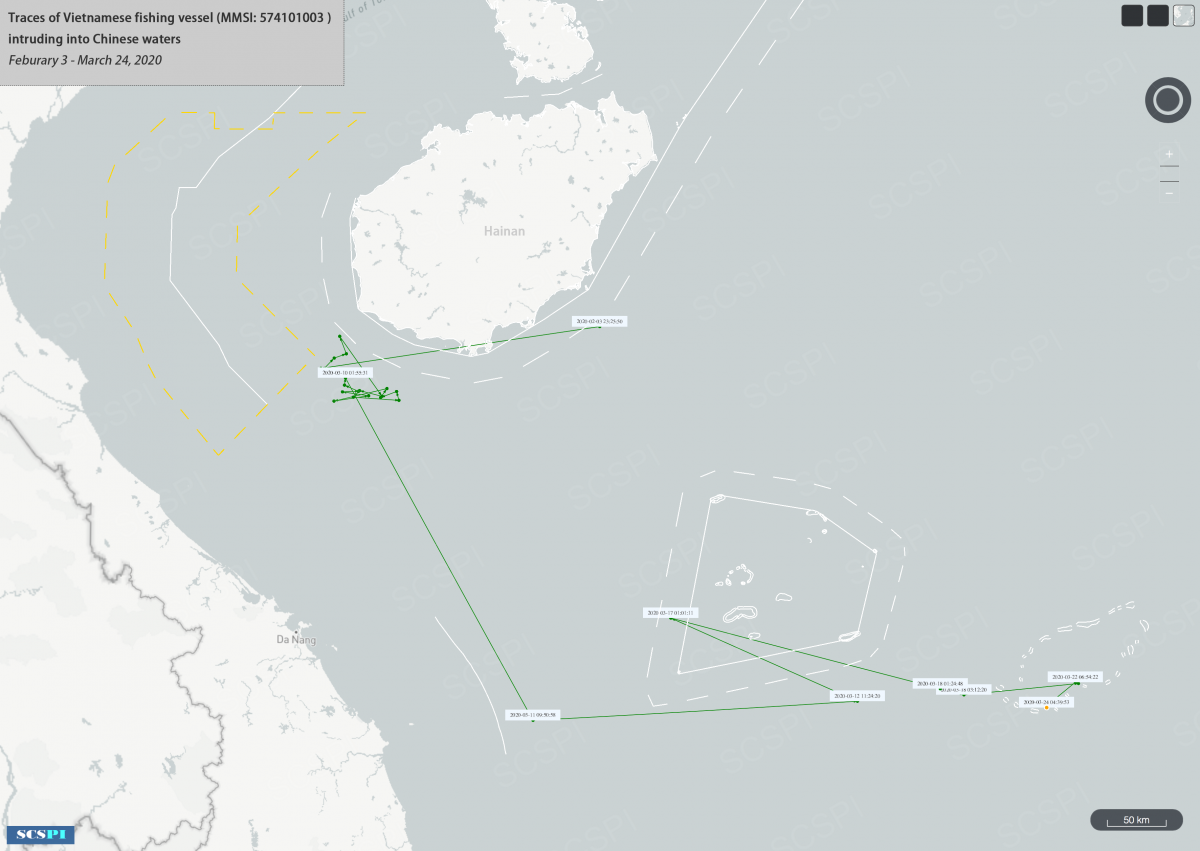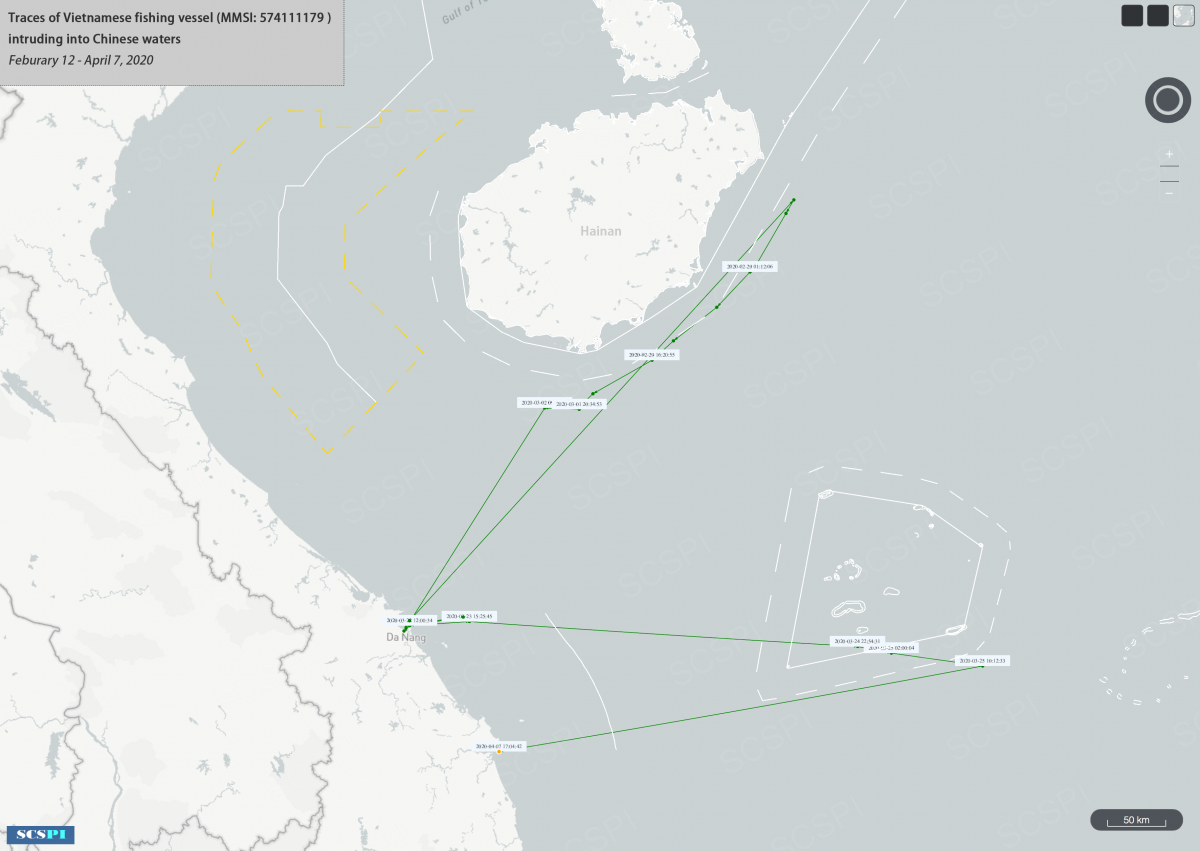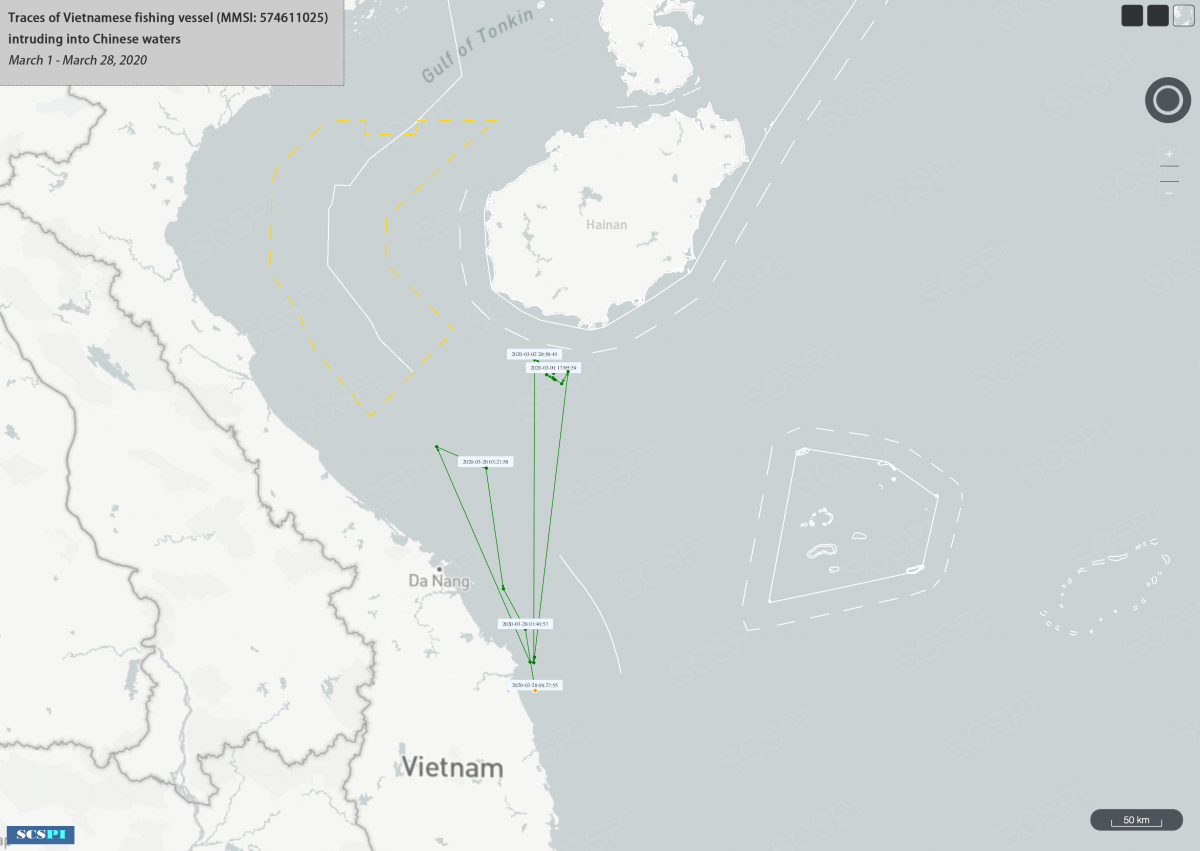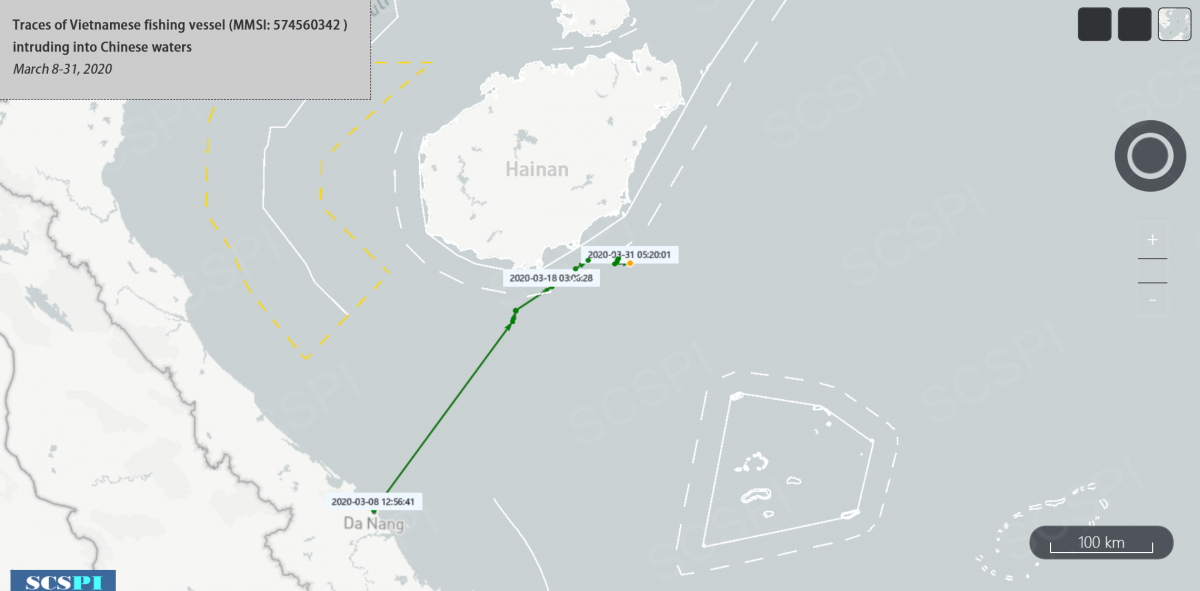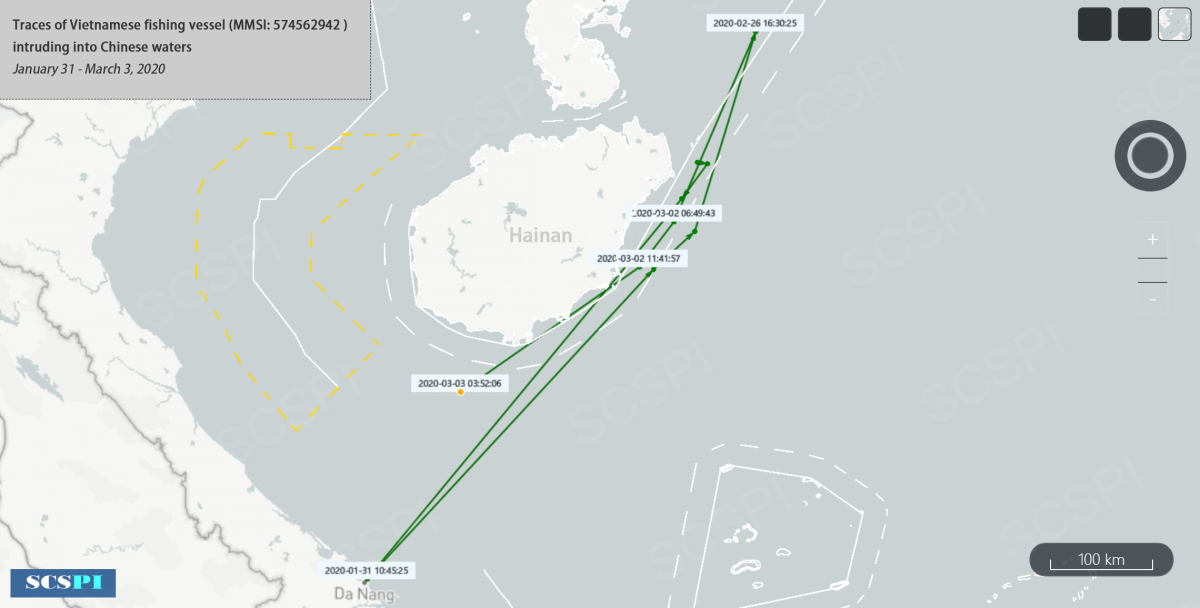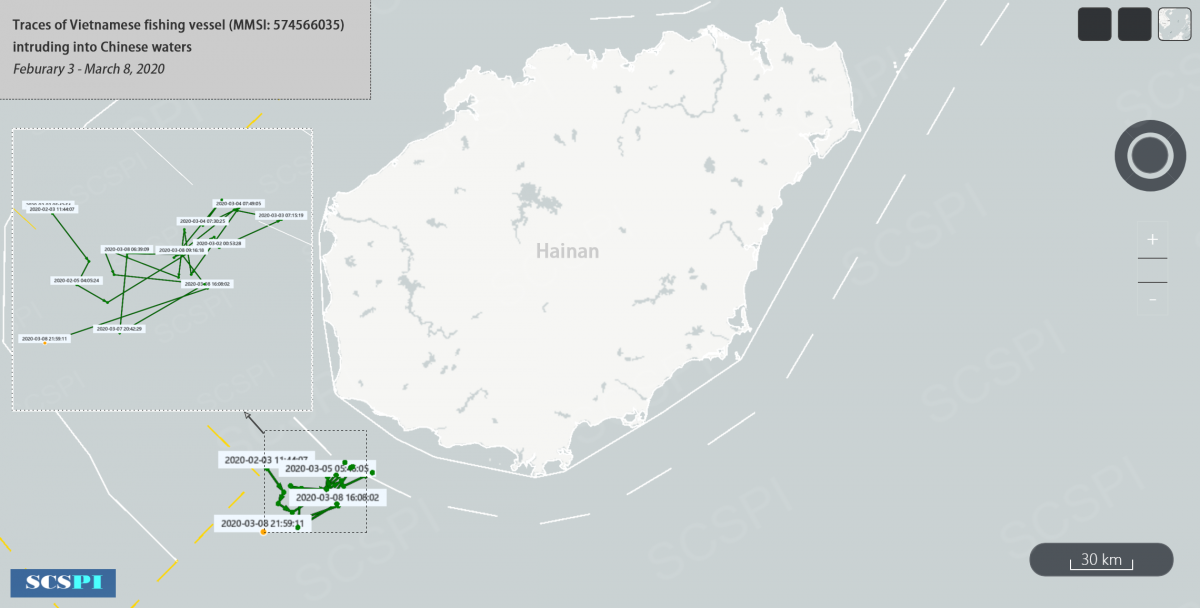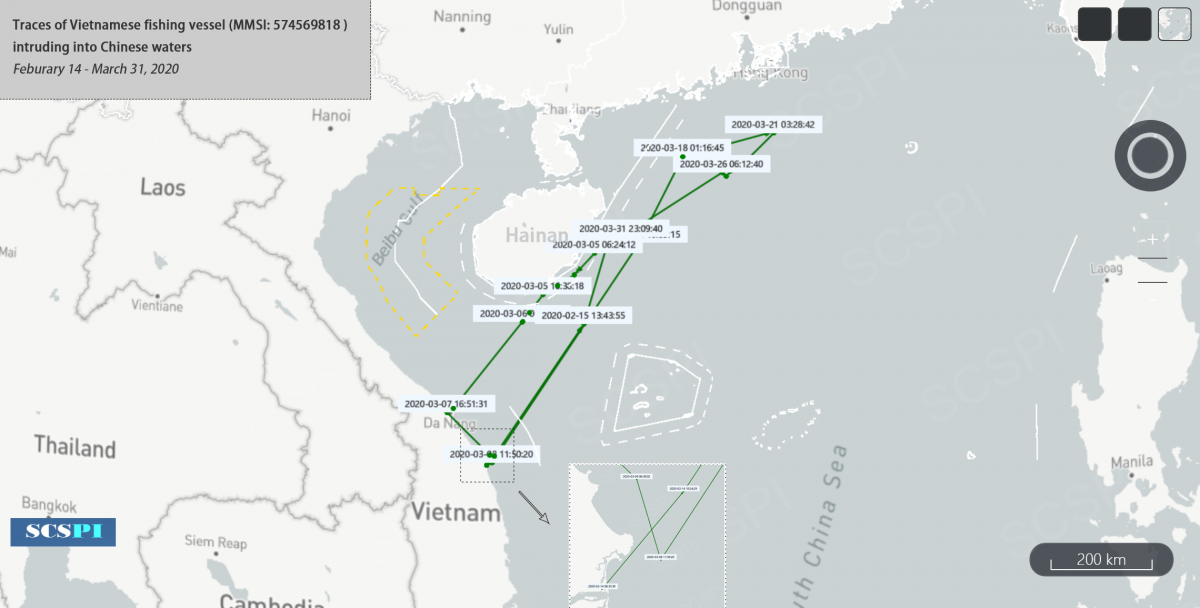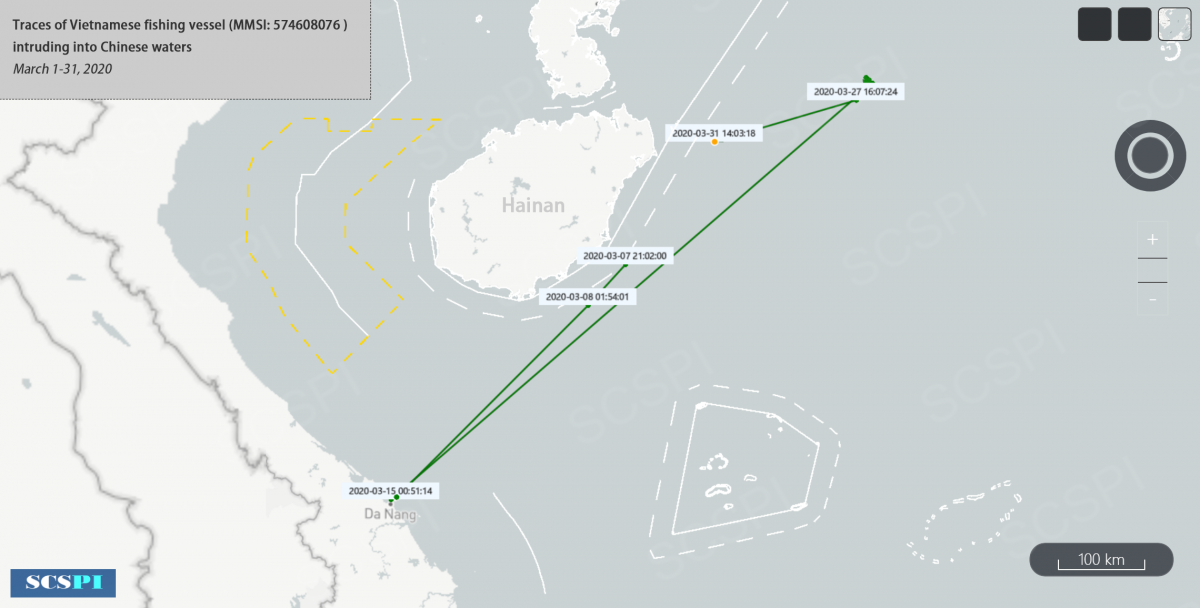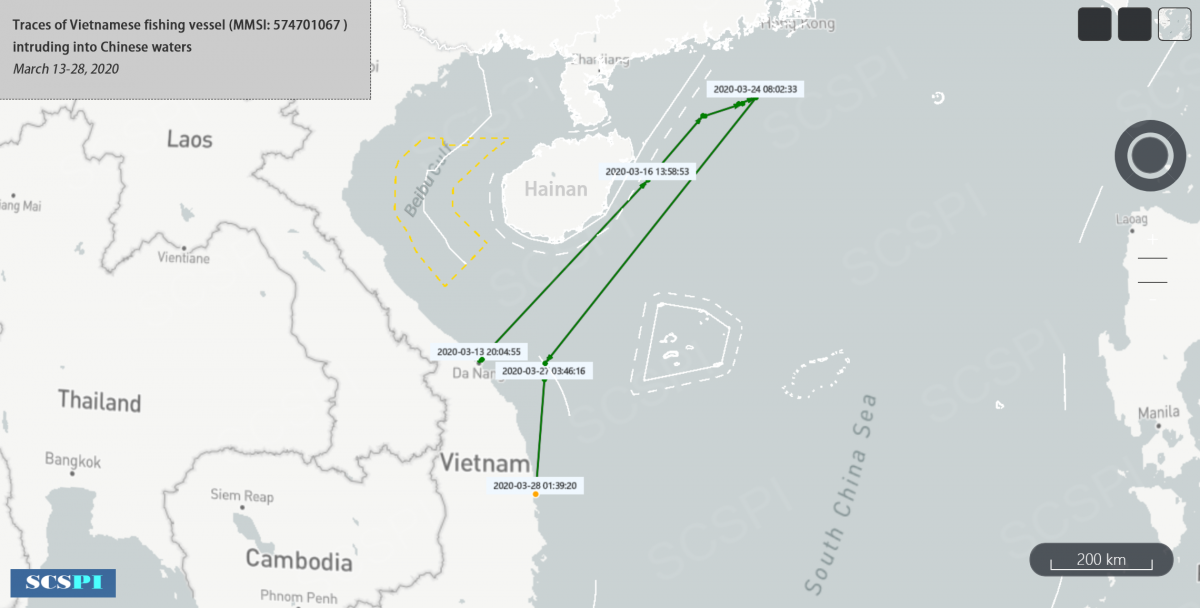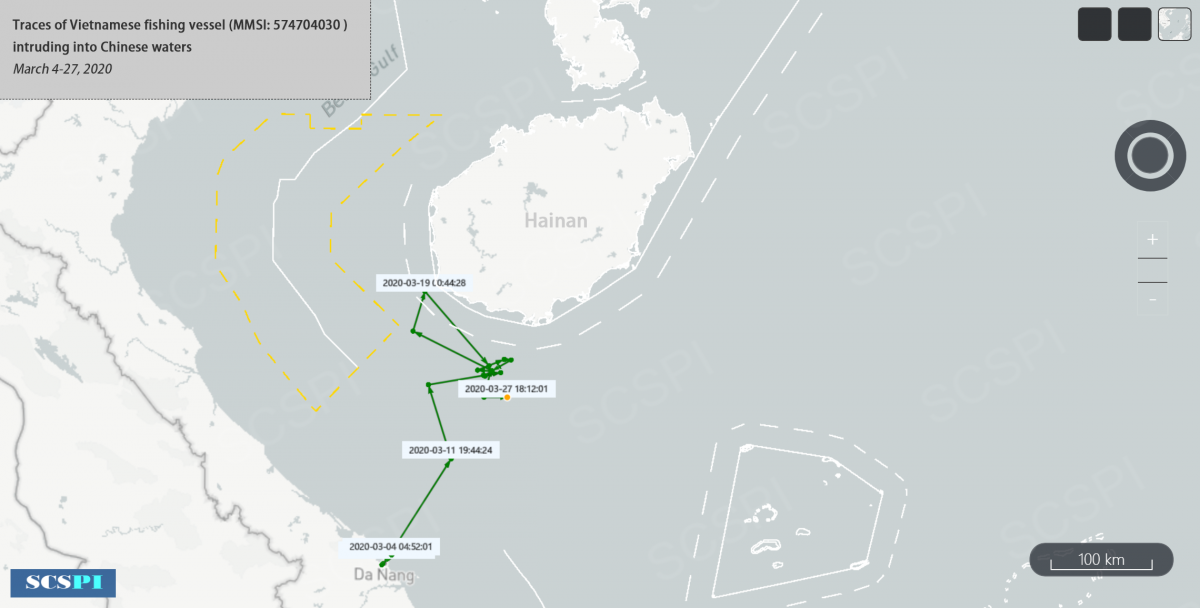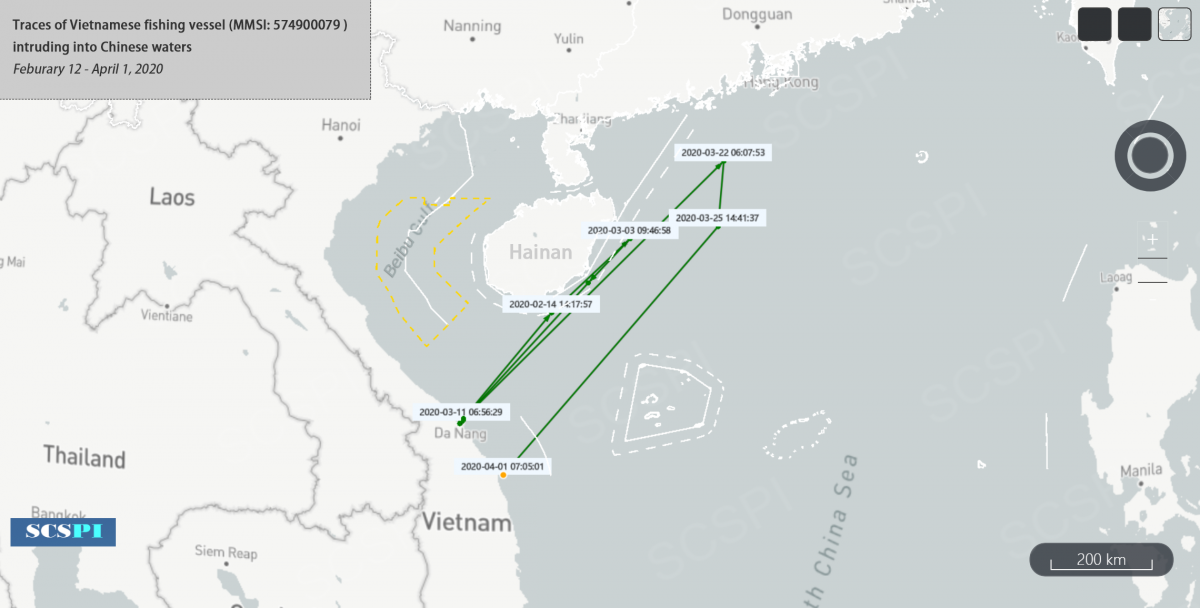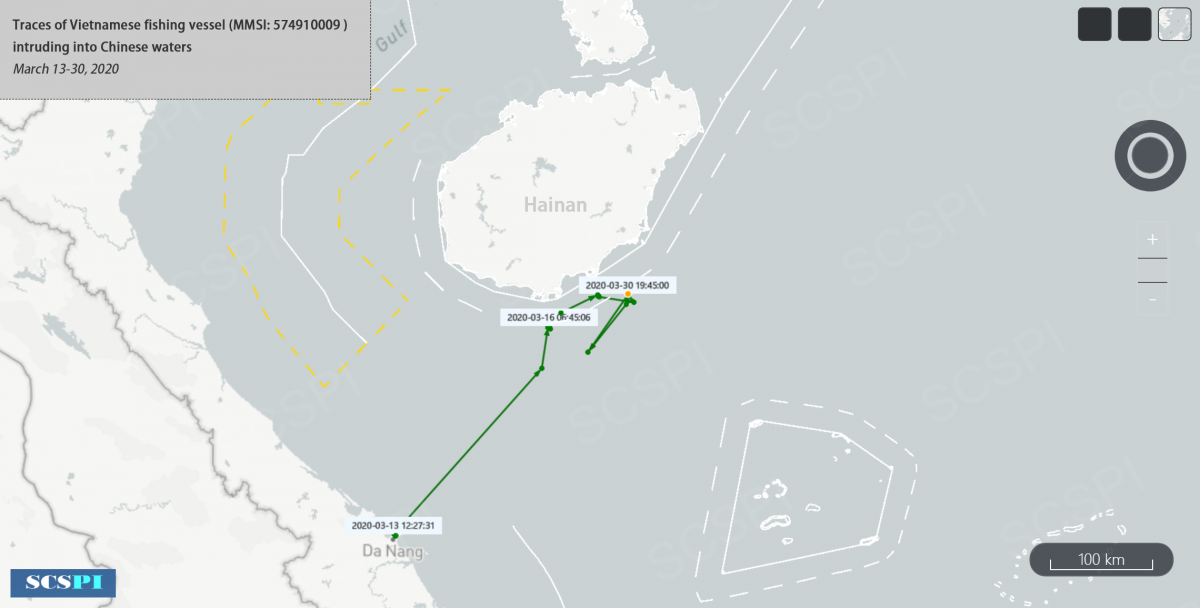In March 2020, illegal activities of Vietnamese fishing vessels around Hainan Island have become increasingly rampant, with at least 569 Vietnamese fishing vessels found in Chinese waters of the Beibu Gulf (excluding those operated in the Sino-Vietnamese common fishery zone), territorial seas and internal waters of Guangdong Province and Hainan Island, as well as 30nm of southeastern waters of the Island (see the appendix for complete traces of 20 typical Vietnamese fishing vessels conducting illegal activities). Around 40 of them intruded into Chinese territorial seas and internal waters.
Compared with the 311 vessels in February, the total amount has surged continually, though with a major change in distribution.
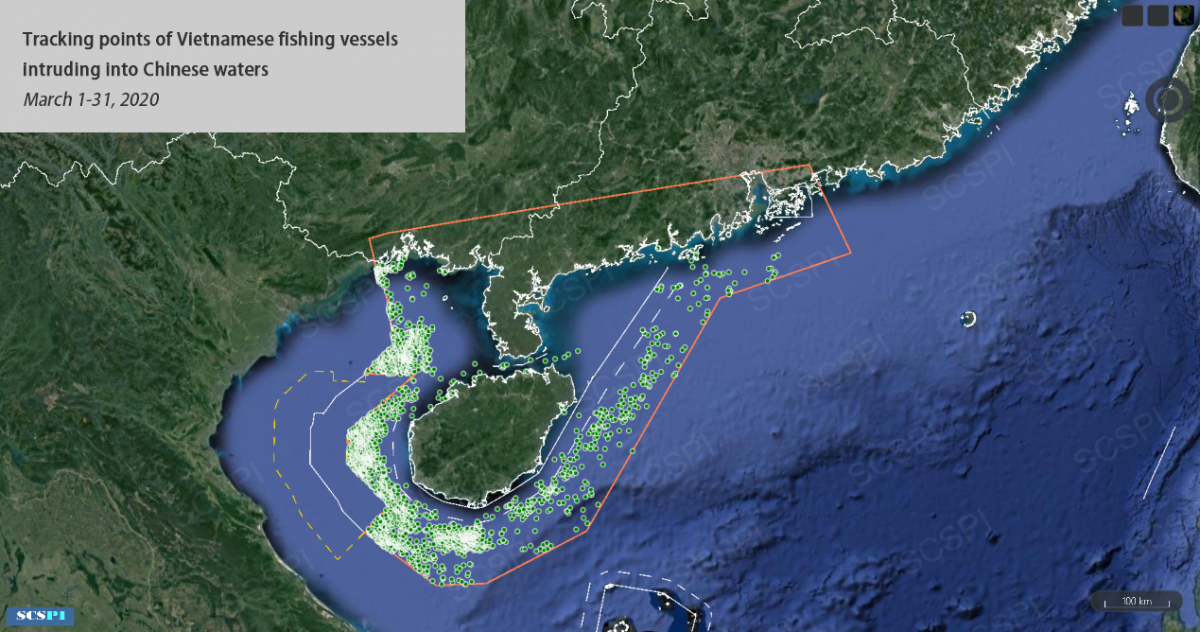
Tracking points of 569 Vietnamese fishing vessels intruding into Chinese Waters, March 1-31, 2020
More Vietnamese fishing vessels, up to around 480 vessels, gathered both inside and outsidethe mouth of Beibu Gulf. Only around 150 vessels (212 vessels in February), on the other hand, were found in waters of Guangdong Province and southeastern waters of Hainan Island. Notably, around 60 of them were found in both of the aforementioned waters in March. In addition, the number of Vietnamese fishing vessels (40 vessels in March) in Chinese territorial seas and internal waters saw a marked decline (73 vessels in February). It is unknown whether the situation owes to tougher law enforcement by China or tighter regulations by Vietnam on its fishing vessels, though it is undoubtedly a positive trend.
There is a prevailing condition worth mentioning that as the new fishing season approached and the weather turned to be better, the activities of Vietnamese fishing vessels skyrocketed all over the South China Sea in March.
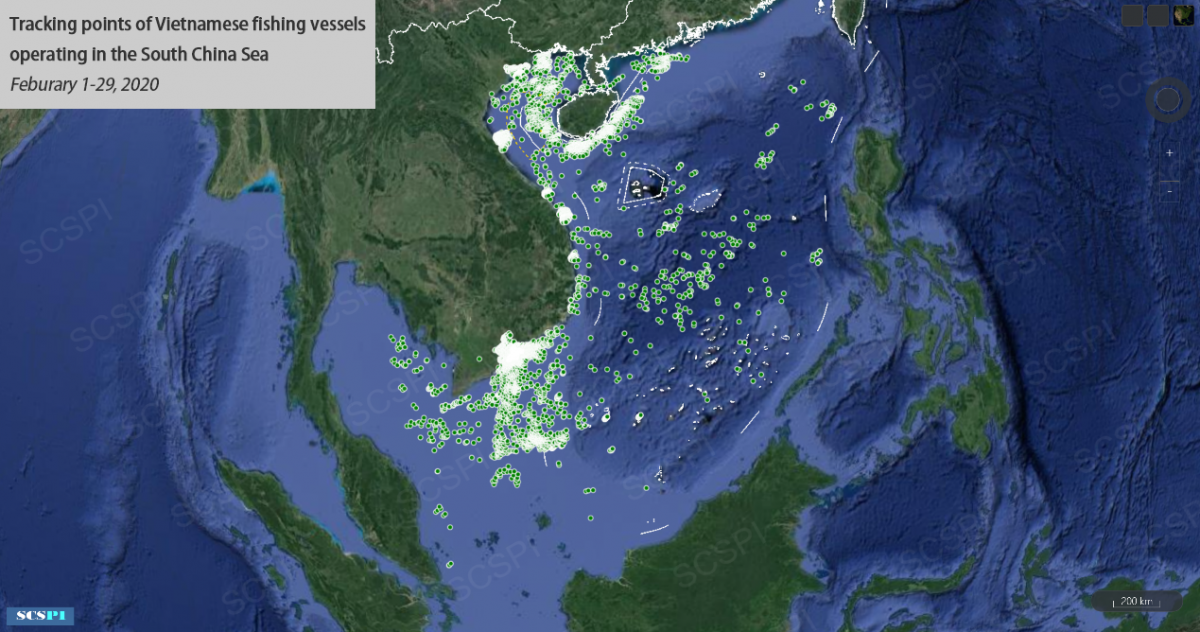
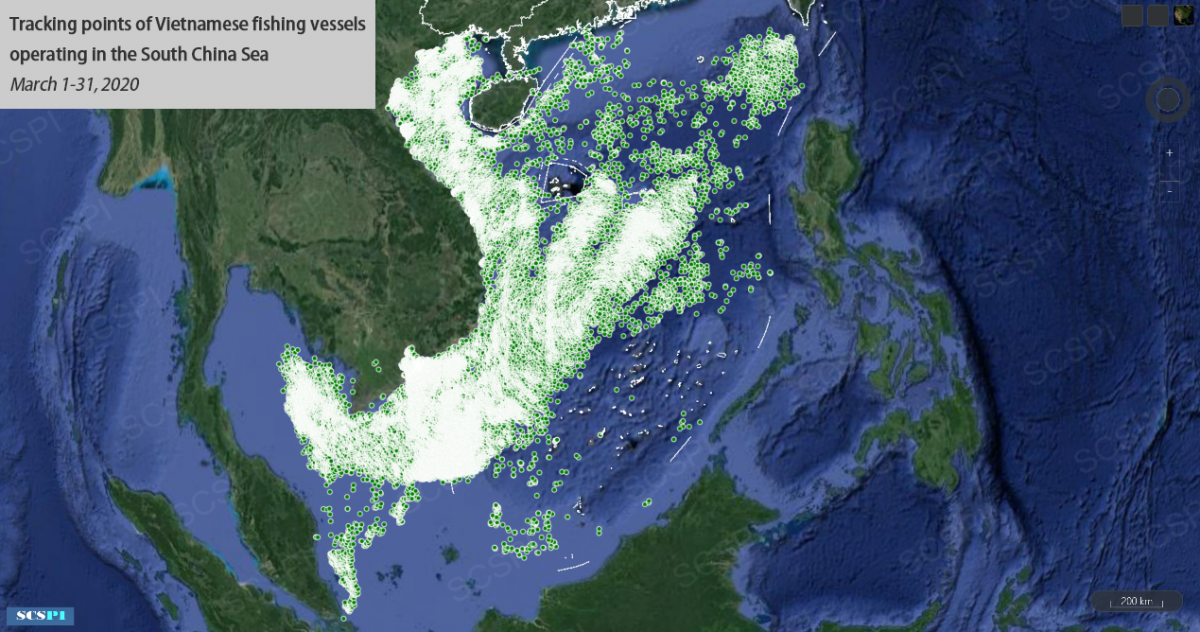
Comparison of Vietnamese Fishing Vessels operating in the South China Sea in February and March
A total of 9,152 Vietnamese fishing vessels were found in the South China Sea including the Gulf of Thailand in March, with 118,937 tracking points recorded by AIS which has almost doubled in contrast with that in February when 4,872 Vietnamese fishing vessels with 60,616 tracking points were recorded.
Given the situation in March, it is obvious that illegal activities of Vietnamese fishing vessels in the South China Sea are identified as a regional issue, which is not limited in the waters of Hainan Island. In fact, Vietnamese fishing vessels also abnormally gathered in the waters of Cambodia, Malaysia and Taiwan region of China, even in whose undisputed waters.
It is worthy to note Vietnamese law enforcement vessels are also recorded in the aforementioned waters. Are they regulating Vietnamese fishing vessels on IUU fishing or conducting the so-called “fishery protection”? Such a situation intensifies the outsiders’ doubts that the illegal activities of those fishing vessels are organized purposely, rather than a few civil activities as claimed by some Vietnamese experts.
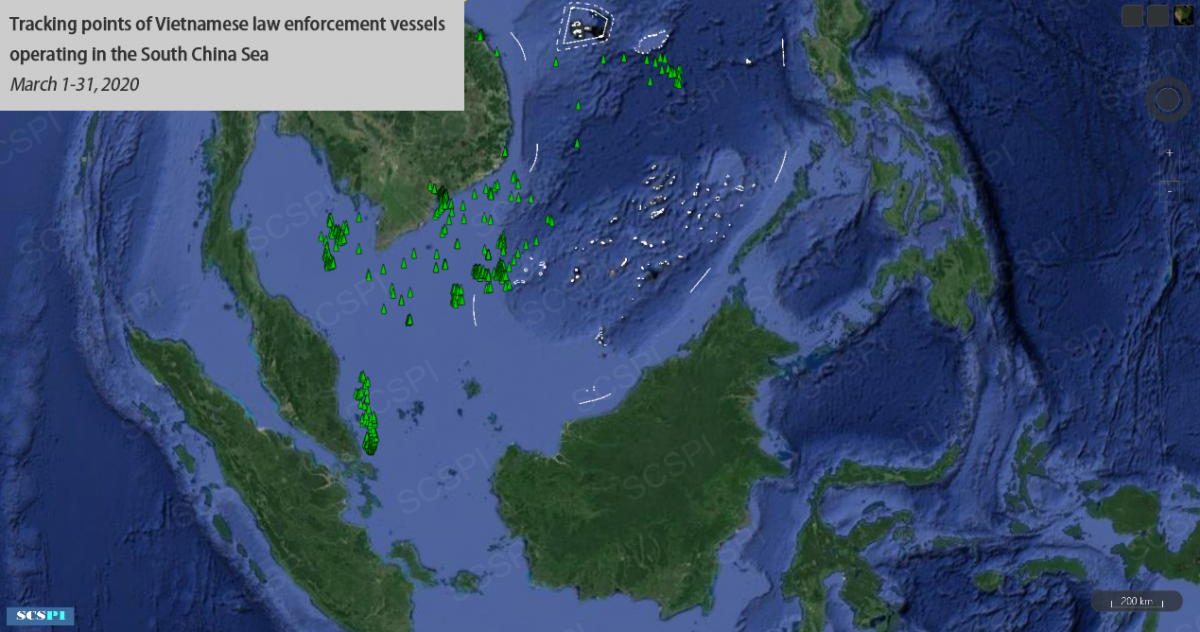
Tracking points of 52 Vietnamese law enforcement vessels operating in the South China Sea in March
Appendix
Traces of 20 Vietnamese fishing vessels conducting illegal activities in waters of Hainan island and beyond in March
